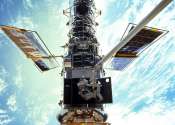NASA's next major telescope to see the big picture of the universe
NASA is beginning to design its next big astrophysics mission, a space telescope that will provide the largest picture of the universe ever seen with the same depth and clarity as the Hubble Space Telescope.









